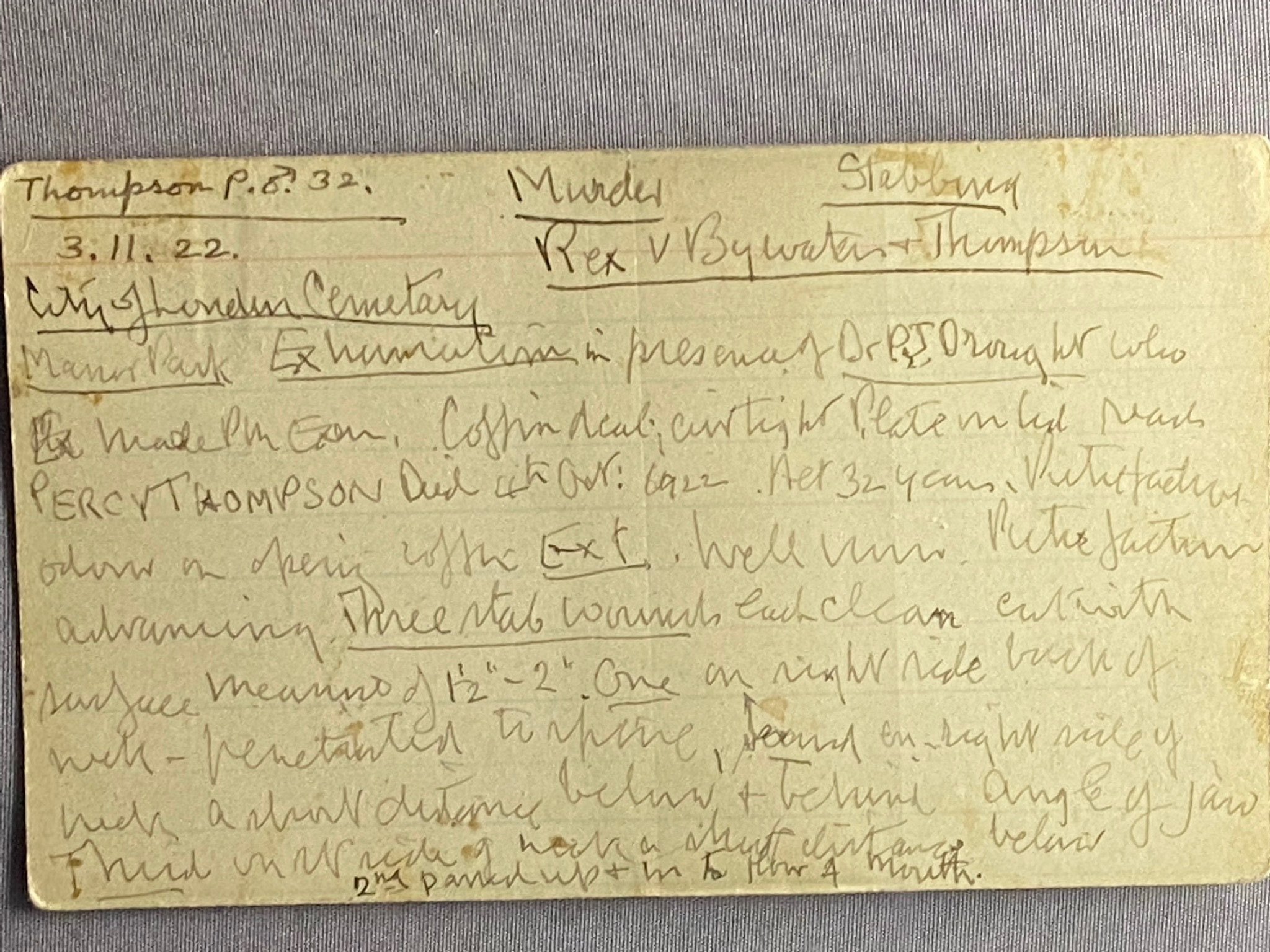Spilsbury’s real life cases
During his career, Sir Bernard Spilsbury provided expert testimony in thousands of cases in the criminal and coroners’ courts. Here are a few of the best-known…
Dr Crippen
When larger than life music hall performer Bella Elmore (AKA Cora Crippen) went missing, her meek husband Hawley Harvey Crippen told the police she had left him and returned to America. They believed him – until dismembered remains were discovered under the cellar floor at the couple’s house in Hilldrop Crescent, Camden. And just to draw even more suspicion on to himself, Crippen promptly fled to Canada with his mistress, Ethel LeNeve disguised as father and son.
After a thrilling transatlantic chase, Crippen was apprehended and brought back to England. He maintained that he had no idea who the body was or how it came to be buried in his cellar. But Dr Spilsbury identified a fragment of scar tissue discovered at the scene as belonging to the unfortunate Mrs Crippen. Even though some doubt was later cast on whether the scar tissue was Cora’s (or even whether it was indeed scar tissue), Spilsbury’s conviction on the matter was enough to persuade the jury, and in November 1910 Crippen went to the gallows.
The Brides in the Bath
One of Spilsbury’s most famous cases featured the much-married Joseph Smith. Even though he already had a wife at home, salesman Joseph travelled up and down the country, wooing and wedding lonely spinsters, drowning them in the bath and then cashing in on their life insurance policies. Since the unfortunate brides were some distance apart from each other, the police made no connection – until the father of one such girl, Alice Burnham, happened to read an account of the death of newlywed Margaret Lofty in the newspaper, and realised it bore an uncanny resemblance to what had happened to his daughter. The net soon closed in on Smith, but it was up to Spilsbury to work out how he had killed his victims, since none of them showed any sign of violent struggle. He had a bathtub moved to Scotland Yard and spent some time experimenting on female volunteers, once almost causing the demise of an unfortunate girl. Finally, he was able to prove that the brides had all died from a sudden inhibition of the vagal nerve, caused by being yanked unexpectedly under water by their feet. Joseph Smith was executed on 13th August 1915.
Edith Thompson and Frederick Bywaters
Edith Thompson carried on a passionate affair with young merchant seaman Freddie Bywaters, right under the nose of her husband Percy. She wrote to Bywaters while he was at sea, fantasising about getting rid of her husband so they could be together. She even claimed to have put ground glass in his food. One evening, Edith and Percy were returning from the theatre when a mystery assailant jumped out on them and stabbed Percy to death. It wasn’t long before police apprehended Frederick Bywaters. And when they found more than 60 incriminating letters from Edith in his possession, suspicion soon fell on her too. Both she and Bywaters insisted she had no idea he was planning to murder her husband. Spilsbury was also convinced of her innocence; he performed the autopsy on Percy Thompson and insisted during the trial that he could find no sign of Edith attempting to poison him. But for once he failed to persuade the jury, and Edith and Frederick were both hanged on 9th January 1923. Thompson’s death was regarded as one of the worst miscarriages of justice in British legal history.
The Crumbles Murder
Strangely, the murder of Emily Kaye was the second to have occurred on the lonely stretch between Eastbourne and Pevensey, known as The Crumbles, in the 1920s, although it was certainly the most gruesome. Patrick Mahon was already a petty criminal who had served time for aggravated assault when he met 37 year old secretary Kaye. When Kaye discovered she was pregnant, despite already having a wife, Mahon promised to marry her. Kaye believed they were going to emigrate and start a new life together, so when she agreed to meet Mahon at a lonely cottage on the south coast she had no reason to believe her life was in danger. According to Mahon, the pair argued over their future plans, and a scuffle ensured, during which Emily Kaye accidentally hit her head. Mahon then panicked and dismembered her body. Although the fact that he had recently purchased a tenon saw and a ten inch knife from an ironmonger’s in Victoria before travelling down to Eastbourne cast some doubt on his claim.
The Crowborough Chicken Farm Murder
Elsie Cameron was engaged to chicken farmer Norman Thorne. When Thorne had a change of heart and called it off, Cameron travelled from London to Thorne’s chicken farm in Crowborough to try to put pressure on him. His claims that Elsie had never arrived were soon proved false by witnesses who had seen them together. And when police searched the farm and dug up Elsie’s belongings, Thorne was forced to confess what had really happened to her. According to him, he had returned to the farm to find that Miss Cameron had hanged herself in despair at being jilted. Rather than go to the police, Thorne had panicked and dismembered her body to conceal it. Spilsbury gave evidence that Elsie Cameron had been beaten to death. But despite there being considerable doubt surrounding the case, the pathologist’s word carried enough weight to condemn Norman Thorne to death. He was hanged on 22 April 1925 after an unsuccessful appeal.
Hardly surprisingly, Thorne himself felt he had been unfairly served by the judicial system and Sir Bernard himself. As he wrote to his father, ‘I am a martyr to Spilsburyism.’






